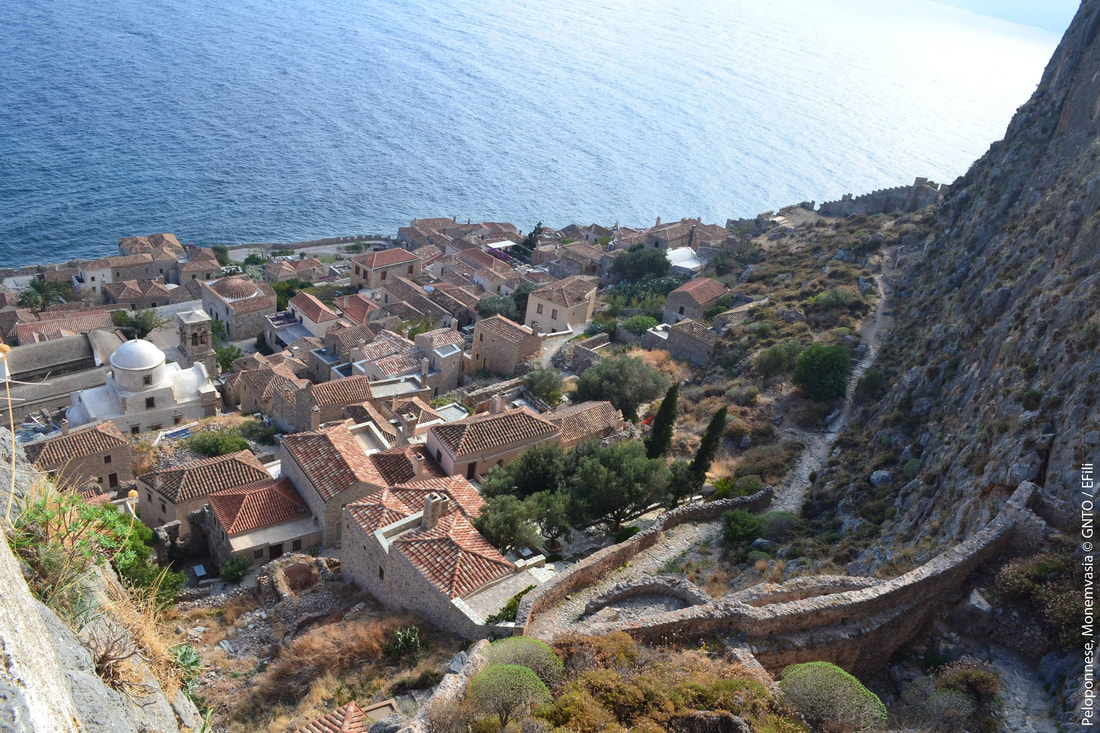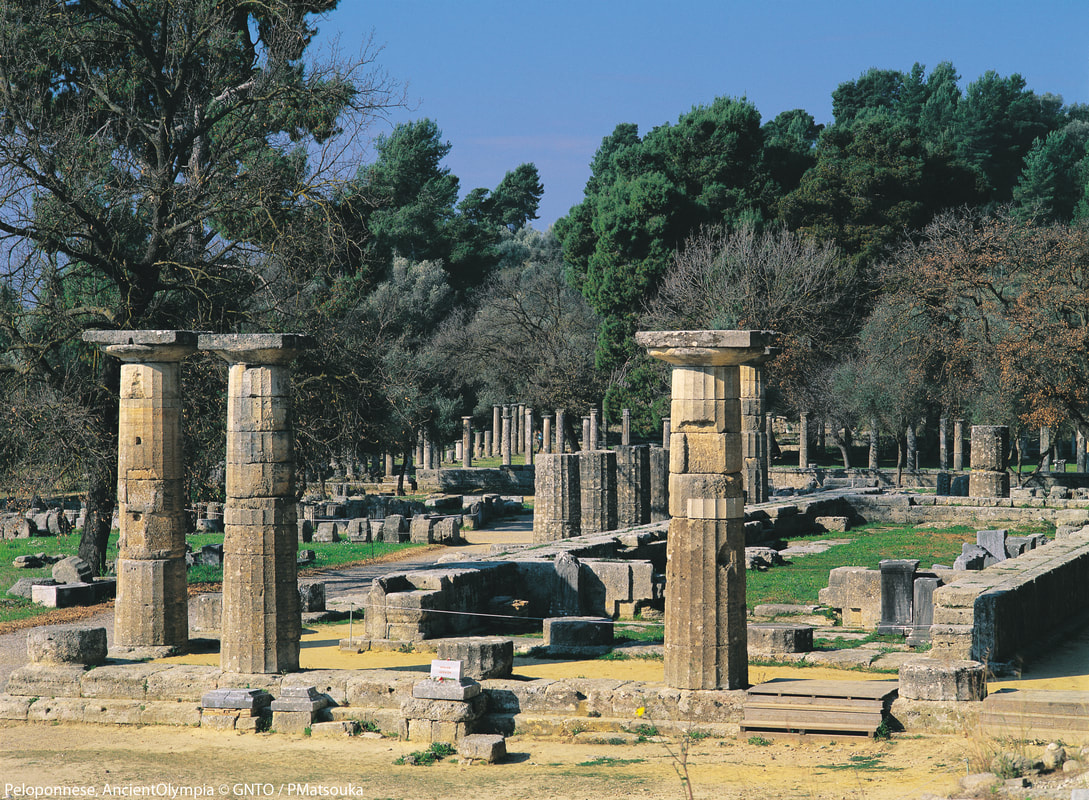|
The Peloponnese is the name given to the southern part of the Greek mainland, from the Corinth Canal downwards. This is where Greece shines through – the food is amongst the best in the country, the region's vineyards provide some of the new guard of Greek wines that are winning awards but most importantly the ‘filoxenia’ or hospitality really is visible here. The area has so much to visit as well, such as beautiful beaches and lovely towns, however it is also home to many of Greece’s historical landmarks, especially from the classical period. Unless you want to stay in one place for the majority of your holiday, you will need to rent a car to see many of them and this opens up opportunities. In this article we’ll take you through how to do a 7 day road trip across the Peloponnese, starting and ending at the region's airport of Kalamata, in which you can take in most of the historical landmarks of the area. At The Greek Specialist, we can all the stress out of it and organise the whole thing from flights to accommodation and car hire, it can all be discussed at the time of enquiry. How to get there Kalamata is the airport to fly into for the Peloponnese. You can fly into Kalamata from London Gatwick, Heathrow, Birmingham, Stansted, Bristol and Manchester. For most of these destinations there is only one or two flights a week, giving us our timeframe for a 7 day road trip. Flights into Kalamata for 2023 go on a Tuesday, Wednesday, Thursday, Saturday and Sunday, although most tend to be at a weekend. Day 1 After landing in Kalamata, you can either spend the day exploring all the city has to offer and stay the night there or you can drive to Sparta, which takes just over an hour, from which you can then explore the next day. If you’re staying in Kalamata, there’s plenty to explore, whether it be museums or churches such as the Church of Agioi Apostoloi or relaxing on any one of the beaches on the cities coast. If you drive straight to Sparta, there’s many places to get some food whilst you walk around the city and take in the sights and sounds. Day 2 Once you’re in Sparta, the two main historical sites are the remains of Ancient Sparta and Mystras. The archaeological site of the famous ancient Sparta is in the north of the town. Here you can explore the fascinating area and see the sites of the Acropolis, Sanctuary of Artemis Orthia and the theatre amongst others. The sites which remain date back as far as nearly 3000 years ago. Think about the history they have seen, walking through you can imagine what it was like in its heyday. Not far out of the town is Mystras, a Byzantine settlement dating back to the 13th century. Built around a large hill, much of the settlement is still standing and one of the churches hosts a museum holding various items from the city. Not only has this settlement still got many of its original buildings, all of which give a good idea of the importance of the city in the region, but also it has a wonderful panoramic view across the surrounding landscape. Possible Addition From Sparta you can then drive north towards Nafplion, if you want to however, you can detour to Monemvasia. Known as the Gibraltar of the East, Monemvasia’s main town is on the easternmost of the Peloponnese’s southern peninsulas. The castle and part of the town is located on a small outcrop which is attached to the mainland by a 200m long causeway. The settlement dates back to the 6th century AD and is another example of the Byzantine era of the region. Much of the town keeps its original rustic appearance and many of the buildings have been restored to keep up the appearance of the town. It should be visited if you have the time. Day 3 If you take a detour to Monemvasia you can go back up and stay in Sparta another night. If you continue onto Nafplion you can stay the night there. Once in the Nafplion area you’re spoilt with what you can do and the sites you can visit. Those that are a must visit are the Fortress of Palamidi in Nafplion and Epidaurus, around a 30/40-minute drive east of Nafplion. The Fortress of Palamidi sits on a hill overlooking Nafplion, this Venetian fortress dominates the surrounding landscape and is intricately built with a number of bastions which when defending could hold out individually without relying on the others. This fortress is well worth exploring in its entirety and gives you excellent views across the surrounding area. The ancient site of Epidaurus contains a stadium and sanctuary but the highlight is the large and impressive theatre. With impressive acoustics and a stunning view across the mountains opposite, this theatre alone makes it worth visiting Epidaurus. Whilst in the Nafplion area, you can go to Argos, the city Perseus saved from the Kraken in the film Clash of the Titans. In Argos there is an ancient theatre and Larissa Castle, a Byzantine-Venetian fortress, amongst other things. Possible Additions Just north of Argos is a number of archaeological sites, one of which is the site of Ancient Mycenae. This civilization once ruled much of Greece around 1200 B.C. Impressively much of the city remains, the focal point being the Lion Gate, named after the lion sculpture which sits above the gate. The site was recognised as a UNESCO World Heritage site in 1999. Alongside the lion gate, there are the remains of the great hall which is surrounded by many other smaller buildings which likely functioned as shops and smitheries and other trades required by the settlement. There are also two grave circles at the site, as well as some domed tombs. Day 4 Moving on from Nafplion, continue driving north towards Corinth whose canal separates the Peloponnese from the rest of the mainland. Corinth, like Nafplion is full of historical sites and museums. As you drive in from Nafplion sits the site of Ancient Corinth, on its acropolis, Acrocorinth. Some of the buildings here date back to prehistoric times and from around the 4th century B.C. Most of the buildings still visible are from the Byzantine, Venetian and Ottoman periods. Ancient Corinth and Acrocorinth are the highlight of this area. In the south of Corinth is the site of the ancient city of Isthmia, known in part for the Isthmian Games, one of the Panhellenic Games that also included the Olympics. Isthmia was also famous for its temple to Poseidon, the remains of which can be seen in a museum that also holds finds from the site. Day 5 On day 5 you can drive round to the north of the Peloponnese and visit the city of Patras. The modern city is the third largest in Greece and the capital of the region. It also has ferry links to Ionian islands such as Kefalonia and Ithaca. In terms of historical sites, Patras is home to the Mycenaean Cemetery of Voudeni as well as Patras Castle. Patras Castle is a site that has been the centre of the city for its entire existence, with the ancient acropolis being home to the first settlement. This was then built on by early Byzantines and subsequently Crusaders and the Venetians. Alongside these sites, the city's museums tell the history of the area and feature items of various archaeological sites from across the city. Day 6 From Patras you can then drive down to Pyrgos the best place to stay near the site of Ancient Olympia, the home of the Olympic Games. Ancient Olympia covers a large area and is full of the ruins of over 70 temples and sanctuaries including those to Zeus and his wife Hera. Alongside its Olympic roots, Olympia was also a spiritual centre which explains the number of religious sites. It is this variety which makes Olympia a must visit. For more insight into the history of the site you can visit the museum which has artefacts relating to the games held there, as well as sculptures and other objects that were found at the site. Whilst there, also visit the stadium where the games were held. Day 7 With most flights back from Greece flying in the evening it gives you plenty of time to make the hour and a half drive from Pyrgos to Kalamata and be in time for your flight. If you have time, take a detour to Methoni, which has one of the best preserved fortresses on the Peloponnese. It can be found on a small outcrop in the western most of the peninsulas. Inside there are some ruins and buildings as well as some Turkish baths. As you can see the Peloponnese is home to many historical sites and we could only fit the main ones into this proposed road trip. If you want to see more, make sure to do some further research. Alternatively if you want to spend more time or take it at a slower pace, then you could simply explore just the western or eastern half, rather than trying to cover it all in 7 days. There are a number of main roads which run across the middle, mainly through Tripoli which allows you to adjust your sightseeing accordingly. We hope this has given you an idea of how you could see some of what the Peloponnese has to offer. The area has much more to it than historical sites and we can help you find places to relax or explore another side the region. To find out more about the rest of Greece, take a look around our website or call us on 01156547795. If you know where you’re looking to book call us, email [email protected] or fill in our contact form with what you’re looking for. Don't forget to follow us on social media to find out the next Destination of the Week and for all your Greek Holiday needs. If you've been to the Peloponnese, where was your favourite place? What was the best thing you did, or do you think we missed anything? Let us know in the comments or on social media, just click the buttons below which take you to our social pages. Categories All
0 Comments
Leave a Reply. |
AuthorGreece is a love affair for The Greek Specialist. Our first visit to the country came in 1997 and since then Blog Destinations
All
Archives
August 2023
|







 RSS Feed
RSS Feed
